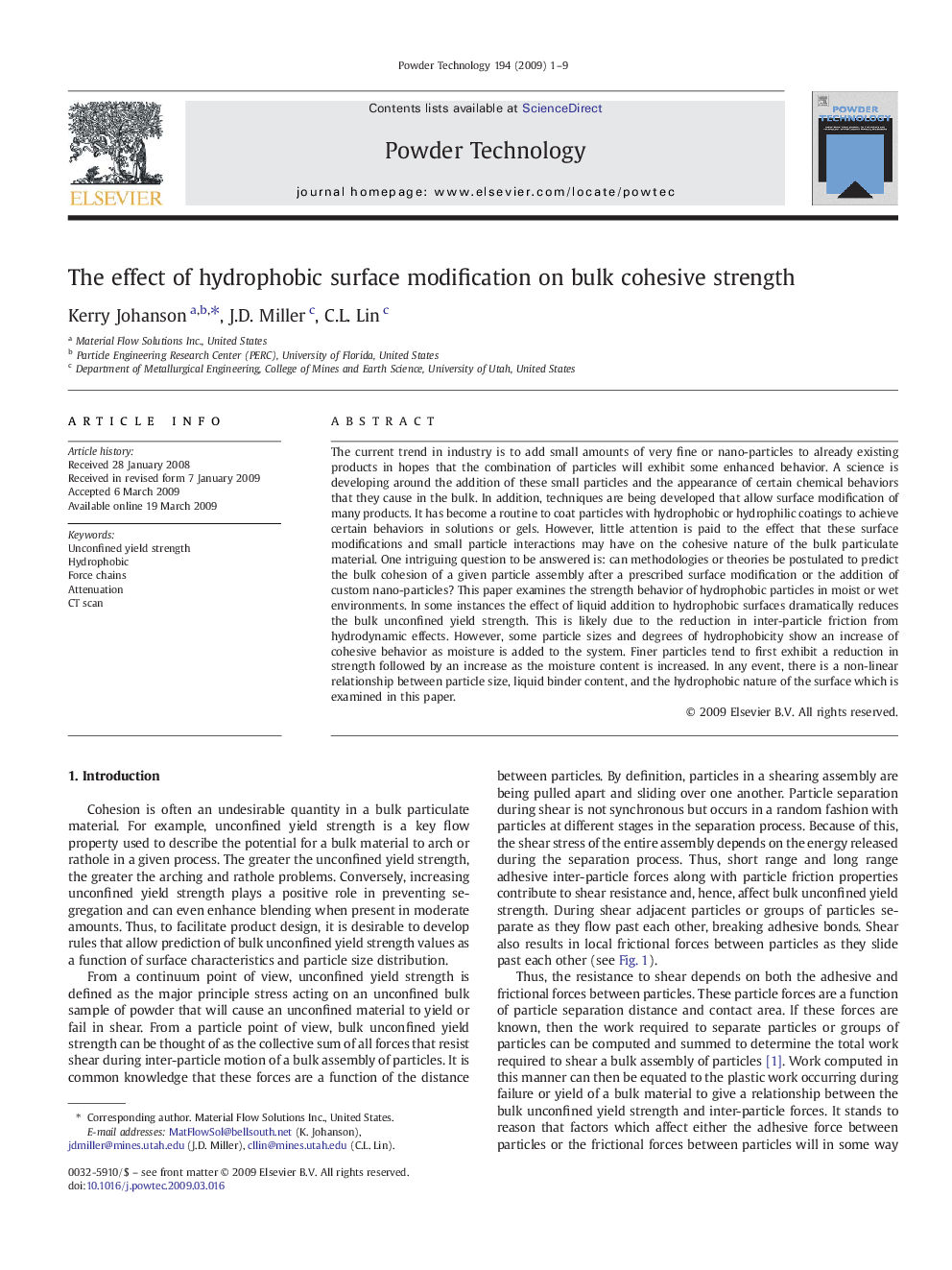| Article ID | Journal | Published Year | Pages | File Type |
|---|---|---|---|---|
| 238533 | Powder Technology | 2009 | 9 Pages |
The current trend in industry is to add small amounts of very fine or nano-particles to already existing products in hopes that the combination of particles will exhibit some enhanced behavior. A science is developing around the addition of these small particles and the appearance of certain chemical behaviors that they cause in the bulk. In addition, techniques are being developed that allow surface modification of many products. It has become a routine to coat particles with hydrophobic or hydrophilic coatings to achieve certain behaviors in solutions or gels. However, little attention is paid to the effect that these surface modifications and small particle interactions may have on the cohesive nature of the bulk particulate material. One intriguing question to be answered is: can methodologies or theories be postulated to predict the bulk cohesion of a given particle assembly after a prescribed surface modification or the addition of custom nano-particles? This paper examines the strength behavior of hydrophobic particles in moist or wet environments. In some instances the effect of liquid addition to hydrophobic surfaces dramatically reduces the bulk unconfined yield strength. This is likely due to the reduction in inter-particle friction from hydrodynamic effects. However, some particle sizes and degrees of hydrophobicity show an increase of cohesive behavior as moisture is added to the system. Finer particles tend to first exhibit a reduction in strength followed by an increase as the moisture content is increased. In any event, there is a non-linear relationship between particle size, liquid binder content, and the hydrophobic nature of the surface which is examined in this paper.
Graphical abstractBulk unconfined strength of a powder or granular material depends on the adhesion forces and frictional forces between individual particles. In the case of hydrophobic surfaces strength often decreases with increasing water content. However the bulk yield strength is also a function of the structure of the particle matrix and can increase with increasing moisture content. The number of major contacts between particles in the matrix also plays a significant role in the unconfined yield strength. In fact, the cross sectional area occupied by major contacts and the inter-particle friction can be combined in such a way as to correlate with bulk strength values measured using standard test equipment.Figure optionsDownload full-size imageDownload as PowerPoint slide
